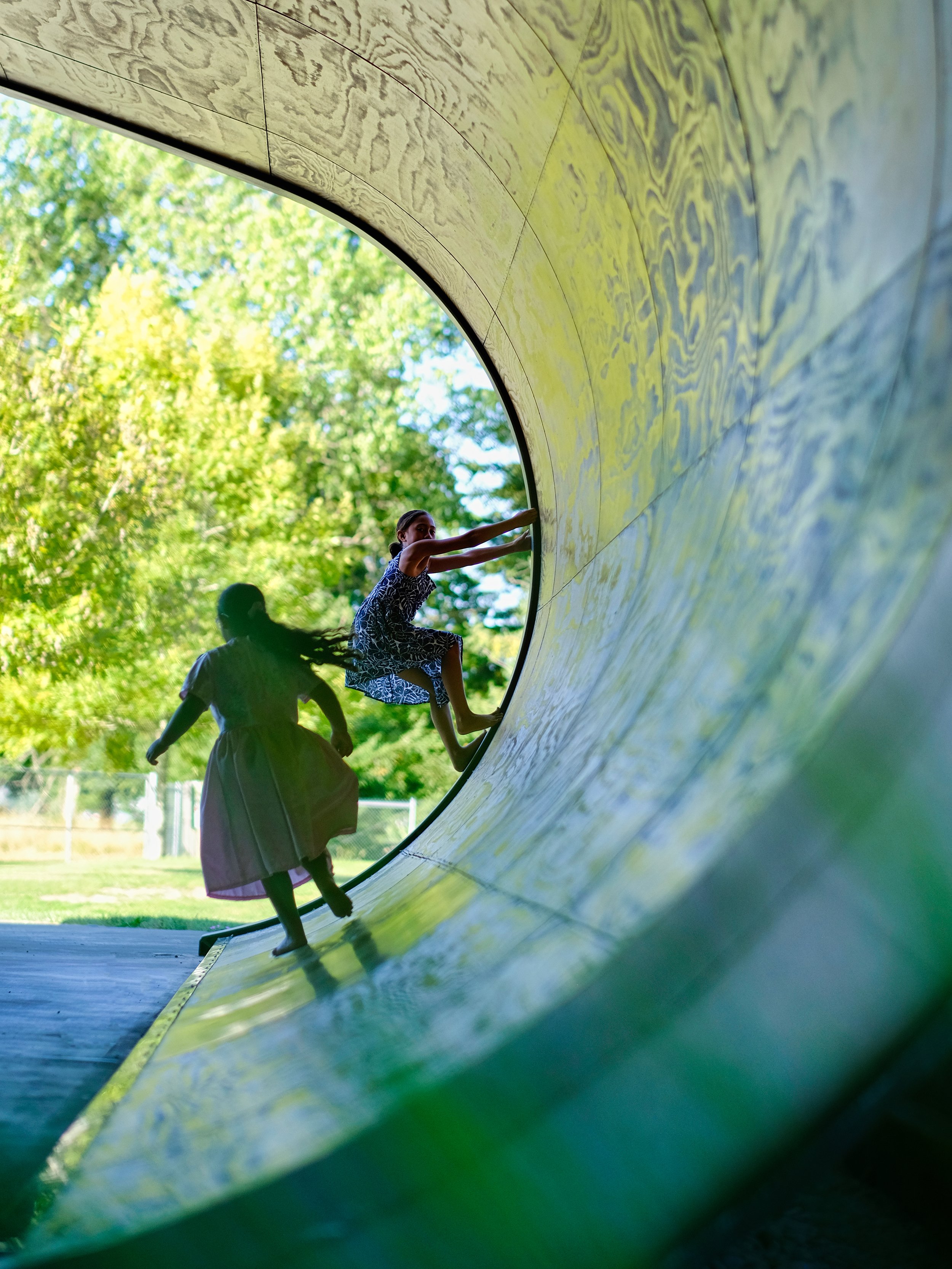
Child Protection
Nelson Tasman Pasifika Community Trust is fully committed to safeguarding the welfare of all children in its care, recognising the responsibility to promote safe practises and protect children from harm, abuse or exploitation while in the care of Nelson Tasman Pasifika Community Trust. Our organisation will work in partnership together with children and parents/carers to promote the welfare, health and development of children.
We believe
Child protection is everyone's responsibility
The welfare of children is the primary concern
All children, whatever their age, culture, disability, gender, language, racial origin, socioeconomic status, religious belief and/or sexual identity have the right to protection from all forms of harm and abuse.
Children have the right to express views on all matters which affect them, should they wish to do so.
And so the purpose of this policy is to ensure the safety and wellbeing of all children in the care of Nelson Tasman Pasifika Community Trust and to promote good practise with regard to the safety and wellbeing of all children in the care of Nelson Tasman Pasifika Community Trust.
This policy applies to all Nelson Tasman Pasifika Community employees, volunteers, management, Board and all children that engage with Nelson Tasman Pasifika Community Trust.
It is the responsibility of the General Manager, Trustees, Employees and Volunteers:
To follow SAFE WORKING PRACTICE GUIDELINES to protect children from at risk situations and to protect staff from unwarranted suspicion
To adhere to all Child Protection Policies including all training and knowledge updates.
To report to the DPCP any suspicion of harm, abuse or exploitation of children.
The General Manager is the Designated Person for Child Protection (DPCP), their role is to;
Be available for advice and support for staff who may have child protection concerns. If immediate contact is not available but required, then the person concerned should contact Child Youth and Family 0508 ED ASSIST (0508 332 774) or 0508 FAMILY (0508 326459) If immediate advice is not required then the DPCP will respond as soon as possible.
Ensure the Child Protection Policy is reviewed annually, and that staff are well informed
Ensure required staff have received child protection training, and that this is recorded
Ensure all practices and procedures have a child protection lens applied
Overseeing the maintenance and confidentiality of child protection records and documentation
Maintaining a good working relationships with Child, Youth and Family, local Police, and other local external agencies involved in child protection.
Ensuring that the list of contacts for child protection advice and support are kept up to date.
If required, undertake training and up-skilling in order to effect the role.
-
All staff must be able to clearly identify the signs and symptoms of abuse, and have the confidence to take the appropriate action.
-
Any issues of suspected child abuse must be taken seriously and handled in an appropriate manner that ensures the child’s safety. If a member of staff has a child protection concern, then they must inform the DPCP as soon as possible.
The DPCP will take responsibility for referrals to and follow-ups with other agencies.
-
Information sharing will be restricted to those who have a need to know in order to protect children.
-
Nelson Tasman Pasifika Community Trust will maintain a good working relationship with Child, Youth and Family and with Police, and be familiar with the laws that serve to protect children from abuse.
Nelson Tasman Pasifika Community Trust will consult with Child, Youth and Family, the Police, and with other appropriate agencies that have specialist knowledge to help protect children from abuse
-
When abuse is suspected or an allegation made against a staff member, the first consideration will be to ensure the safety of the child.
Allegations will be treated in such a way that the rights of adults and the stress upon the staff member are also taken into consideration.
The person managing the child abuse concern will not be the same person as that managing the employment issue
-
Nelson Tasman Pasifika Community will maintain a robust vetting and screening process for recruitment of all staff and volunteers.
-
All staff will read and have a copy of the Child Protection Policy.
Reference to the Child Protection Policy will be made on a regular basis in staff meetings as a standing agenda item with the Safety Committee.
Staff will be trained in child protection on annual basis, so that staff remain familiar with and up to date with the policy statements and procedures.
-
All staff will follow safe working practice guidelines in regard to working with children.
Dealing with Disclosures of Abuse
Only a minority of children actively disclose abuse. Most child abuse is disclosed accidentally or though observation by an adult of a child’s behaviour, words and physical appearance.
When a child does disclose abuse, this needs to be taken very seriously. It is important that any disclosure is dealt with appropriately, both for the well-being of the child and also to ensure that your actions do not jeopardise and legal action against the abuser.
There are a number of basic ‘rules’ that should be followed to ensure the safe handling of any disclosures of abuse from a child:
Don’t panic.
Remember that the safety and well-being of the child come before the interests of any other person.
Listen to the child and accept what the child says.
Look at the child directly, but do not appear shocked.
Don’t seek help while the child is talking to you.
Reassure them that they did the right thing by telling someone.
Assure them that it is not their fault and you will do your best to help.
Let them know that you need to tell someone else.
Let them know what you are going to do next and that you will let them know what happens.
Be aware that the child may have been threatened.
Write down what the child says in their own words – record what you have seen and heard also.
Make certain you distinguish between what the child has actually said and the inferences you may have made. Accuracy is paramount in this stage of the procedure.
Tell your manager or Designated Person for Child Protection as soon as possible.
Refer to Child, Youth and Family or the Police.
After making the referral to Child, Youth and Family or the Police, look after yourself. Discuss the matter with your manager, supervisor or relevant person.
Important Notes:
The same action should be taken if the allegation is about abuse that has taken place in the past, as it will be important to find out if the person is still working with or has access to the children.
Dealing with an allegation that a professional, staff member, foster carer or volunteer has abused a child is difficult but must be taken seriously and dealt with carefully and fairly.
-
Repeat the last few words in a questioning manner
‘I believe you’
‘I am going to try to help you’
‘I will help you’
‘I am glad that you told me’
‘You are not to blame’
-
‘You should have told someone before’
‘I can’t believe it! I am shocked!’
‘Oh that explains a lot’
‘No not…he’s a friend of mine’
‘I won’t tell anyone else’
‘Why? How? When? Where? Who?’
-
Reassure the child that it was right to tell you.
Let them know what you are going to do next.
Immediately seek help, in the first place from the designated person for child protection.
Write down accurately what the child has told you. Sign and date your notes. Keep all notes in a secure place for an indefinite period.
Seek help for yourself if you feel you need support.
-
Do not attempt to deal with the situation yourself.
Do NOT formally interview the child.
Never ask leading questions.
Never push for information or make assumptions.
Only necessary relevant facts should be obtained, when clarification is needed.
Do not make assumptions, offer alternative explanations or diminish the seriousness of the behaviour or alleged incidents.
Do not keep the information to yourself or promise confidentiality.
Do not take any action that might undermine any future investigation or disciplinary procedure, such as interviewing the alleged victim or potential witnesses, or informing the alleged perpetrator or parents or carers.
Do not permit personal doubt to prevent you from reporting the allegation to the Designated Child Protection Person
Safe Working Practice Guidelines
Power and Positions of Trust
A relationship between an adult and a child or young person is not a relationship between equals.
Adults should always maintain appropriate professional boundaries and avoid behaviour which might be misinterpreted by others.
Confidentiality
Adults may have access to confidential information about children in order to undertake their everyday responsibilities. This may be highly sensitive and private information about them or their family and fanau. Care and consideration must be taken with the sharing of information.
It is important that if a child is at risk of, or suffering, abuse then that information is passed to the appropriate person to take action.
Sharing Concerns and Reporting Incidents
Adults should acknowledge their individual responsibilities to bring matters of concern to the attention of senior management and/or relevant external agencies. This is particularly important where the welfare of children may be at risk.
Individuals should be aware of their organisation’s process for reporting incidents, including concerns that staff may have about colleagues or other professionals. Staff should also be encouraged to self report any situations that occurred that in hindsight might be viewed as inappropriate.
It is essential that accurate and comprehensive records are maintained wherever concerns are raised about the conduct or actions of adults working with or on behalf of children.
Positive Role Models
Adults in contact with children should understand and be aware that safe practice also involves using judgement and integrity about behaviours in places other than the work setting. The behaviour of an adult’s partner or other family and fanau members may raise similar concerns and require careful consideration by an employer as to whether there may be a potential risk to children in the workplace.
A person’s dress and appearance are matters of personal choice and self-expression. However, adults should dress in ways which are appropriate to their role and this may need to be different to how they dress when not at work.
On-to-One Situations
One to one situations have the potential to make a child or young person more vulnerable to harm by those who seek to exploit their position of trust. Adults working in one to one settings with children may also be more vulnerable to unjust or unfounded allegations being made against them. Both possibilities should be recognised so that when one to one situations are unavoidable, reasonable and sensible precautions are taken. Every attempt should be made to ensure the safety and security of children and the adults who work with them.
Transparency and open communication with colleagues is essential, always flag situations and communicate intent.
Photography, Video and Images
Careful consideration should be given as to how activities involving the taking of images are organised and undertaken.
Adults should ensure that children are not exposed to any inappropriate images or web links.
Any images taken on personal devices must be transferred to NTPCT servers and deleted within one week.
Gifts, Rewards and Favouritism
The giving of gifts or rewards to children should be part of an agreed policy for supporting positive behaviour or recognising particular achievements. Any gifts should be given openly and not be based on favouritism. Adults need to be aware however, that the giving of gifts can be misinterpreted by others as a gesture either to bribe or ‘groom’ a young person.
Care should also be taken to ensure that adults do not accept any gift that might be construed as a bribe by others, or lead the giver to expect preferential treatment.
Infatuations
Occasionally, a child or young person may develop an infatuation with an adult who works with them. These adults should deal with these situations sensitively and appropriately to maintain the dignity and safety of all concerned. They should remain aware, however, that such infatuations carry a high risk of words or actions being misinterpreted and should therefore make every effort to ensure that their own behaviour is above reproach.
An adult, who becomes aware that a child or young person is developing an infatuation, should discuss this at the earliest opportunity with a senior manager and parent/carer so appropriate action can be taken to avoid any hurt, distress or embarrassment.
Physical Interactions with Children
There are occasions when it is entirely appropriate and proper for staff to have physical contact with children, but it is crucial that they only do so in ways appropriate to their professional role.
A ‘no touch’ approach is impractical for most staff and will in some circumstances be inappropriate. When physical contact is made with a child this should be in response to; their needs at the time, of limited duration and appropriate to their age, stage of development, gender, ethnicity and background.
Children and Young People in Distress
There may be occasions when a distressed child needs comfort and reassurance and this may involve physical contact. Young children, in particular, may need immediate physical comfort, for example after a fall, separation from parent etc. Adults should use their professional judgement to comfort or reassure a child in an age-appropriate way whilst maintaining clear professional boundaries.
Behaviour Management and Physical Intervention
There are circumstances in which adults working with children displaying extreme behaviours can legitimately intervene by using either non-restrictive or restrictive physical interventions. The use of physical intervention should, wherever possible, be avoided. It should only be used to manage a child or young person’s behaviour if it is necessary to prevent personal injury to the child, other children or an adult, to prevent serious damage to property or in what would reasonably be regarded as exceptional circumstances.
When physical intervention is used it should be undertaken in such a way that maintains the safety and dignity of all concerned.
The scale and nature of any physical intervention must be proportionate to both the behaviour of the individual to be controlled and the nature of the harm they may cause. The minimum necessary force should be used and Outdoors with techniques deployed in line with recommended policy and practice.
Definitions of Abuse
The Children, Young Persons and their Families Amendment Act, 1994, section 2, defines child abuse as;
“…the harming (whether physically, emotionally, sexually), ill-treatment, abuse, neglect, or deprivation of any child or young person”.
Below are some indicators of abuse, these are should not be seen as an exhaustive list or as a check list.
Emotional Abuse
Emotional abuse is the persistent emotional ill-treatment of a child such as to cause severe and persistent adverse effect on the child’s emotional development. This can include a pattern of rejecting, degrading, ignoring, isolating, corrupting, exploiting or terrorizing a child. It may also include age or developmentally inappropriate expectations being imposed on children. It also includes the seeing or hearing the ill-treatment of others.
Physical Abuse
Physical abuse is a non-accidental act on a child that results in physical harm. This includes but is not limited to, beating, hitting, shaking, burning, drowning, suffocating, biting, poisoning or otherwise causing physical harm to a child. Physical abuse also involves the fabrication or inducing of illness.
Sexual Abuse
Sexual Abuse involves forcing or enticing a child or young person to take part in sexual activities (penetrative and non-penetrative, for example, rape, kissing, touching, masturbation) as well as non-contact acts such as involving children in the looking at or production of sexual images, sexual activities and sexual behaviours.
Neglect
Neglect is the persistent failure to meet a child’s basic physical and/or psychological needs, causing long term serious harm to the child’s health or development. It may also include neglect of a child’s basic or emotional needs. Neglect is a lack: to action, emotion or basic needs.
Intimate Partner Violence
A child may be vulnerable to abuse through being a witness of “Intimate partner violence”, this refers to any behaviour within an intimate relationship that causes physical, psychological or sexual harm to those in the relationship.
Such behaviour includes:
Acts of physical aggression – such as slapping, hitting, kicking and beating.
Psychological abuse – such as intimidation, constant belittling and humiliating.
Forced intercourse and other forms of sexual coercion.
Various controlling behaviours – such as isolating a person from their family and friends, monitoring their movements, and restricting their access to information or assistance.
Cumulative harm
Cumulative harm refers to the effects of patterns of circumstances and events in a child or young person's life which diminishes their sense of safety, stability and well-being. Cumulative harm is compounded experiences of multiple episodes of abuse or layers of neglect. Constant daily impact on the child or young person can be profound and exponential, covering multiple dimensions of their life.
For further information about identifying child abuse and neglect can be found on the Child Matters website www.childmatters.org.nz

